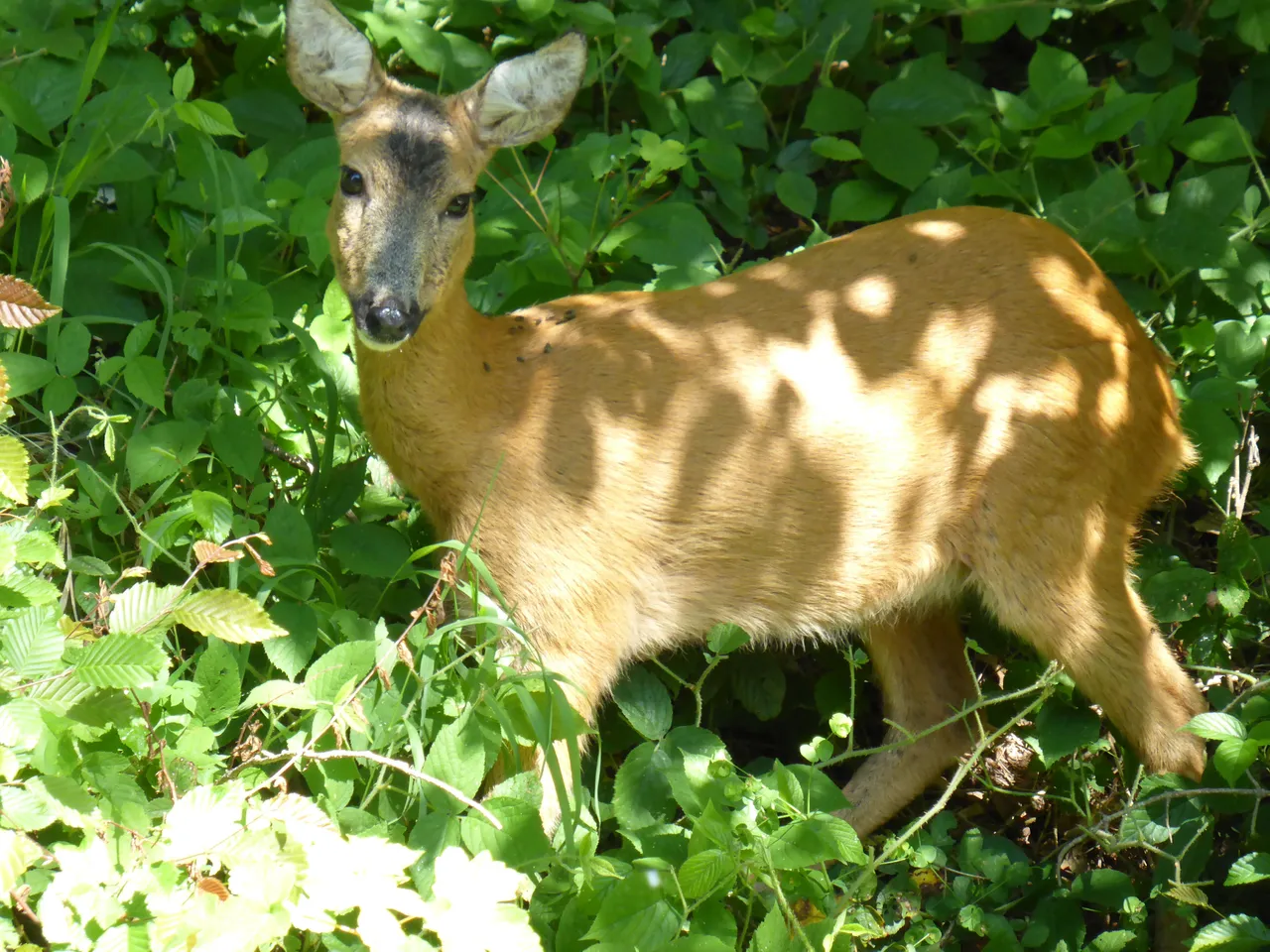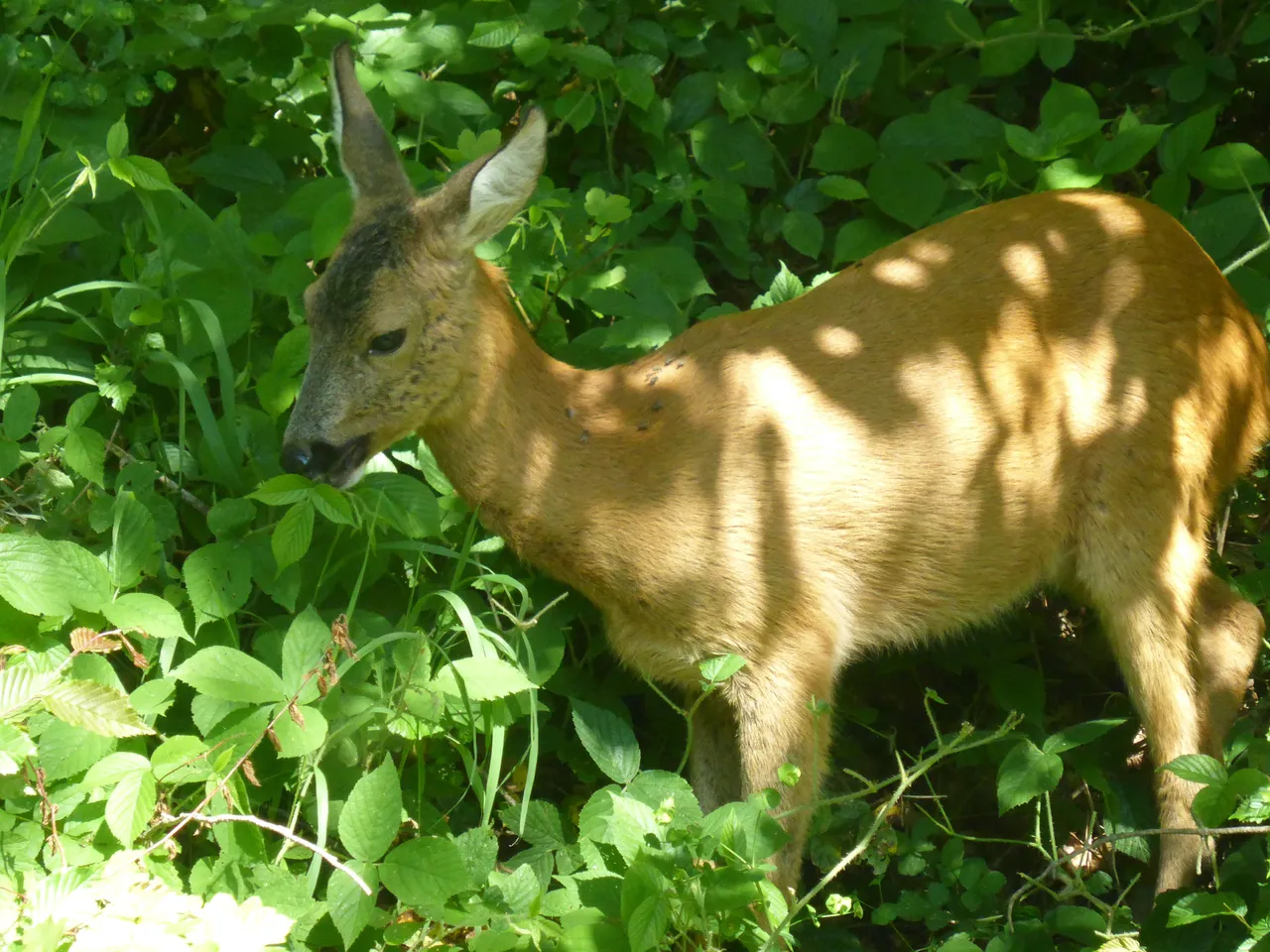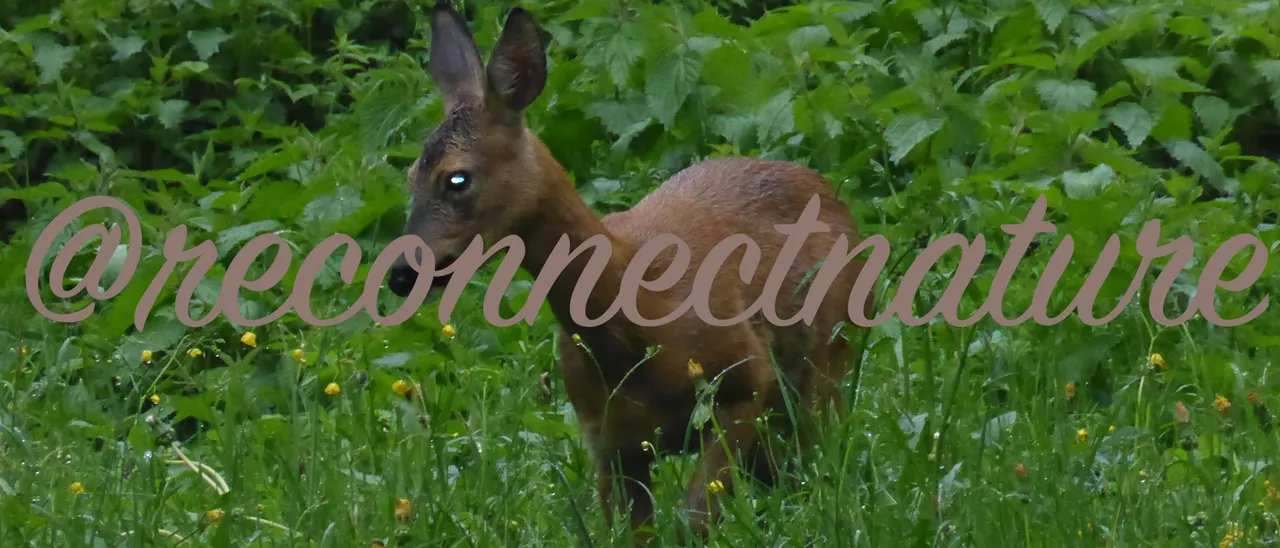Information about the species Capreolus capreolus (European roe deer)
Informationen über die Art Capreolus capreolus (Europäisches Reh)
Since some of you decided to just be interested in the earning part, without contributing to the reward pool. I decided to make a small change in my rules, from now on you have to upvote the post as well in order to earn and not only one of the species suggestions in the comments.
Da sich ein paar von euch dafür entschieden haben nur am Verdienen interessiert zu sein, ohne etwas zum Reward pool beizutragen. Hab ich mich entschieden eine kleine Änderung in den Regeln zu machen, von jetzt an müsst ihr auch den Post upvoten um etwas zu verdienen und nicht nur einen der Art Vorschläge in den Kommentaren.
Intro
| Capreolus capreolus (European roe deer) |
Capreolus capreolus (Europäisches Reh) |
| This species is commonly distributed almost everywhere in Europe (with the exception of some European islands), as well as in Turkey and some parts of Syria, Iraq, Iran and Caucasus. |
Diese Art ist fast überall in Europa häufig verbreitet (mit der Ausnahme von ein paar europäischen Inseln), sowie auch in der Türkei und Teilen von Syrien, Irak, Iran und dem Kaukasus. |
| Naturally they preferred different types of forests as habitat. However, over time they adapted very well to a mosaic of farm- and wood-lands and can even cope with modern agriculture. |
Natürlicherweise bevorzugten sie verschiedene Typen von Wäldern als Habitat. Über die Zeit haben sie sich aber auch sehr gut an ein Mosaik aus Acker- und Wald- gebieten angepasst und kommen sogar mit der modernen Landwirtschaft zurecht. |
| It is colored reddish brown in summer and grayish brown in winter, with a body length ranging from 95 cm up to 135 cm and a body weight from 15-30 kg. The roe deer fawn has a typical white spotted fur, that vanishes in their first winter. |
Sie ist rotbraun gefärbt im Sommer und graubraun gefärbt im Winter, mit einer Köper Länge die von 95 cm bis 135 cm reicht und einem Körpergewicht von 15-30 kg. Das Rehkitz hat ein typisches weiß getüpfeltes Fell, dass mit dem ersten Winter verschwindet. |
| Roe deers are territorial and only in early summer the polygamous males move in to other territories for mating. The females usually give birth after about 10 months of gestation to one or two fawns. |
Rehe sind territorial und nur im frühen Sommer ziehen die polygamen Männchen in andere Territorien zur Paarung. Das Weibchen gebärt für gewöhnlich ein bis zwei Kitz nach einer 10 monatigen Schwangerschaft. |
| They feed on grasses, herbs, leaves, mushrooms and berries, mainly in early morning and in the evening. |
Sie ernähren sich von Gräsern, Kräutern, Blättern, Pilzen und Beeren, vor allem am frühen Morgen und am Abend. |
| According to IUCN the populations are despite the extensive hunting stable and even increasing. Except some smaller isolated populations, like the subspecies Capreolus capreolus italicus that are threatened due to hybridization with other introduced subspecies, poaching and free-ranging dogs. |
Laut IUCN sind die Populationen trotz weitreichender Jagd stabil und sogar am wachsen. Mit der Ausnahme von kleineren isolierten Populationen, wie der Unterart Capreolus capreolus italicus, die durch Hybridisierung mit eingeführten Unterarten, Wilderei und freilaufenden Hunden gefährdet sind. |
Sources/Quellen
https://en.wikipedia.org/wiki/Roe_deer, accessed on 24.03.2018
http://www.iucnredlist.org/details/42395/0, accessed on 24.03.2018
http://www.wald.de/das-reh-capreolus-capreolus-l/, accessed on 24.03.2018
Hanák, V., & Hísek, K. (1984). Tiere in Wald und Flur. Köln: Lingen.
All pictures are and will be photographed by myself
Alle Fotos sind und werden von mir selbst fotografiert



Which animal should I introduce in the next "learn & earn" episode?
Please vote your favorite from my 3 suggestions in the comments!
All 3 suggestions were drawn randomly from a growing pool of species
Welches Tier soll ich im nächsten "lerne & verdiene" Teil vorstellen?
Bitte votet euren Favoriten von meinen 3 Vorschlägen in den Kommentaren!
Alle 3 Vorschläge wurden zufällig aus einem wachsenden Pool an Arten gezogen
How to you earn from this post?
- Half of the SBD earned with this post will be distributed equally to all those who voted on this post and on one of my suggestions for the next episode (please vote just on one suggestion).
- Everyone who writes another interesting and well researched info about the introduced species in the comments (with source of the info) will earn 0.5 SBD.
- If you think that I identified the species (or genus) wrong and you can prove it somehow, you will get 5 SBD as a thank you.
I remain the right not to giveaway SBD to those votes or comments I deem as spam or are not compliant to the rules!
Wie verdient ihr mit diesem Post?
- Die Hälfte der von diesem Post verdienten SBD wird gleichmäßig zwischen all jenen verteilt die diesen Post und einen meiner Vorschläge für die nächste Episode upvoten (bitte nur einen Vorschlag voten).
- Jeder der eine weitere interessante und gut recherchierte Info über die vorgestellte Art in den Kommentaren schreibt (mit Quelle der Info) erhält 0.5 SBD.
- Wenn ihr denkt das ich die Art (oder Gattung) falsch bestimmt habe und ihr mir das irgendwie beweisen könnt, bekommt ihr 5 SBD als Dankeschön.
Ich behalte mir das Recht keine SBD an Votes oder Kommentare zu geben die ich für Spam halte oder die nicht regelkonform sind!
Learn to know and appreciate the other species you are sharing this beautiful world with! ;)
Lernt die Arten mit denen ihr diese schöne Welt teilt kennen und schätzen! :)






